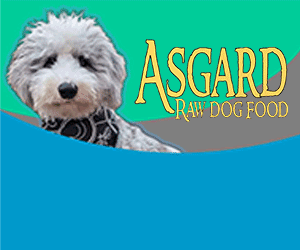On the bit means that the horse is stepping up or lifting under the rider’s seat to a connection with the bit. As a result, the horse is “on the bit.” I have heard it is also called “on the aids.” So what does that mean, on the aids? Well, the horse is connecting to all three of the rider’s aids : legs, seat, and hands.
A horse being on the bit is a primary criteria of a dressage horse. It is what separates dressage riders from other riding disciplines. As a matter of fact, putting a horse on the bit is an art and not easy. Most dressage riders have ODC or Obsessive Dressage Compulsion to obtain on the bit! A horse being on the bit is the holy grail of dressage.
The word dressage just simply means the gymnastic training of the horse. So can’t a horse be ridden gymnastically and not be on the bit? Well, of course, it can, but not for our dressage sport. It is the process of having a horse on the bit that engages the horse’s back to be part of the training. If a horse is round throughout the top line and on the bit, it utilizes its lifted back.
We train horses laterally and longitudinally. Laterally means the training of the side muscles such as bending and longitudinal is the horse stretching over its back. So when we “dressage” our horses, we supple and engage all of the horse’s muscles both laterally and longitudinally when they are on the bit.
Have you heard of the ring of muscles or ring of aids? This is the horse stepping under the seat of an unconstrained rider and accepting connection to the bit. Then this stepping under is recycled back to the hindquarters. When the horse accepts being on the bit through this ring of muscles, it is “submissive” to the rider’s aids. Riding the whole horse back to the front on the bit creates a circle of energy. The horse is stepping under the rider’s seat, telescoping from the base of the neck to the bit. At this point, the energy is transported back through the rein to the rider’s seat and leg. It is a circle of the rider’s aids that connect to the ring of muscles in the horse. Called riding back to front or tail to the tongue, but it should really be called from the abdomen muscle of the horse to the tongue or bit. And that is just the beginning of dressage. Once a rider has that, the next step is learning how to progress the horse’s training and keep it on the bit.
There are many versions of the horse being on the bit. Some trainers say there should be weight in your hands, others say the horse should be light, others say there should be four ounces in the outside rein and 2 ounces in the inside rein. I prefer the light version where my horse flexes at the poll and chews the bit. I ride a Percheron cross, and I do not encourage him to lean on my hands.
A rider will feel when a horse accepts contact because everything riding is a feeling between horse and human. The outline or frame of the horse on the bit working over its top line, and not just in a headset, feels like a unified package back to front. Often riders feel the horse’s back lift. The old masters said the horse’s back should massage the rider’s seat!
I think I over think this, but my job is to educate riders in dressage, and I love to write about it too, not just instruct. When I teach, I share the why and how we gymnastically train our horses. I do not just verbalize commands to get to an end result. I ask students questions when I teach. It is a dialog. A few simple questions are ~ what are your three aids, the different reins aids, your inside and outside rein called, your inside and outside leg called, or when do you use your leg to ask the horse to go forward… And, the big question, how do you get the horse on the bit? The why and how of what we are doing! (Answers below)
The photos in this article show horses tracking up or stepping under onto the bit. All dressage tests say the horse should move unconstrained with the rider. Yet, so many riders pull the horse’s head in, crank, and disrupt a soft mouth connection and or ride so forward the horse is running out of balance, thinking they’ll get it to accept contact!
On the bit or accepting contact is an art and beautiful to watch when done with poise and finesse. The holy grail of dressage or putting a horse on the bit is one of the most challenging goals of training a horse in dressage. My opinion is that you are not doing dressage unless your horse has accepted contact. Once you have developed the feeling of a horse stepping over its back with a relaxed rhythm to the bit, then the dressage world will be your oyster.
Answers to questions ~
The natural aids are : legs, seat and hands
The different reins aids are : direct, indirect, opening, and closing.
The rider’s inside leg is called the active leg it asks the horse to step forward.
The rider’s outside leg is called the passive leg and it keeps the haunches from falling out. (So not sure why it is passive)
You ask the horse to go forward as the horses’s inside hind leg is stepping forward.
How do you get the horse on the bit, by asking! Lol . “Ask and you shall receive,” we say at Coventry…



